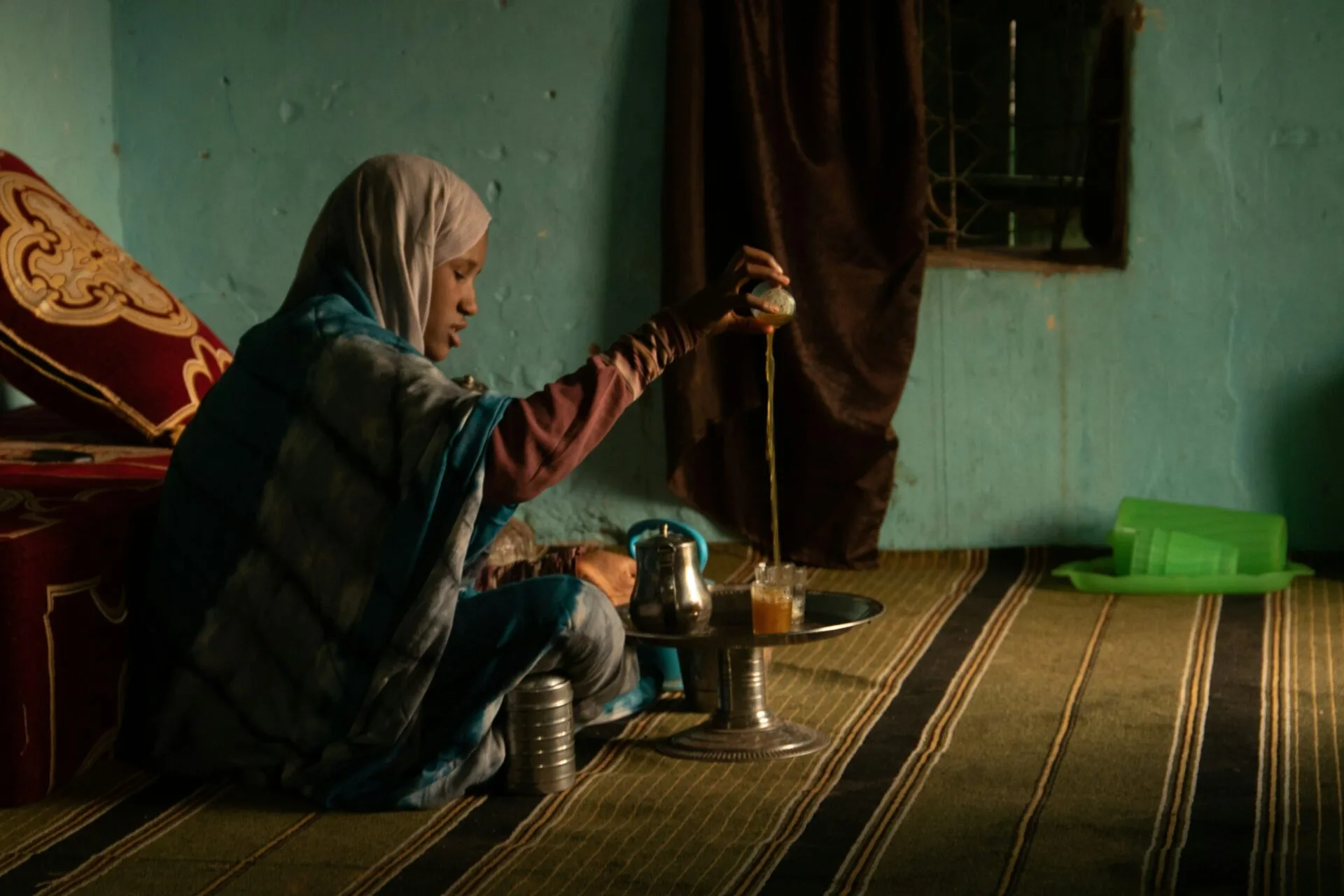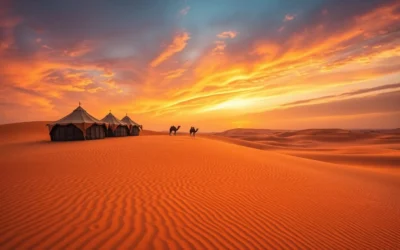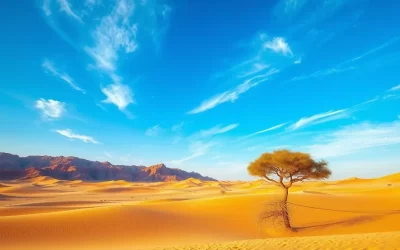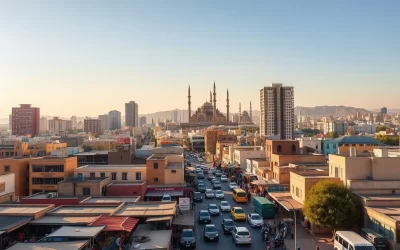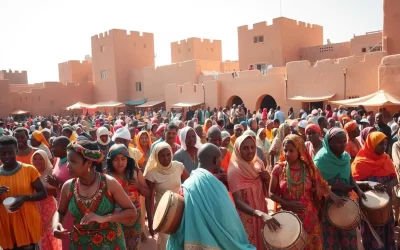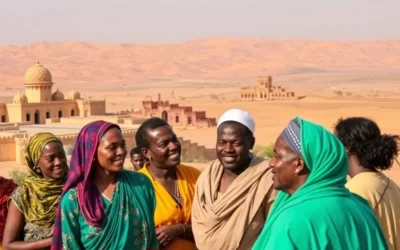Did you know that Mauritania is home to the world’s longest train? Stretching over 2.5 kilometers with more than 200 wagons, the legendary Iron Ore Train travels 700 kilometers across the Sahara Desert daily. This extraordinary journey is just one of many unique experiences awaiting adventurous travelers in this little-visited West African nation. Straddling the boundary between North Africa and sub-Saharan Africa, Mauritania offers a fascinating blend of Arab-Berber and Black African cultures set against a backdrop of endless desert landscapes, ancient trading towns, and a surprisingly diverse coastline.
Getting to Mauritania
Most international visitors arrive in Mauritania through Nouakchott International Airport (NKC), which offers connections to several European and African cities. Turkish Airlines, Air France, and Royal Air Maroc operate regular flights to the capital. For those traveling overland, border crossings are possible from Morocco/Western Sahara in the north and Senegal in the south, though border procedures can be complicated.
Ready to Explore Mauritania?
Find the best flight deals to Nouakchott and start your Saharan adventure.
Best Time to Visit Mauritania
The ideal time to visit Mauritania is during the cooler months from November to February when daytime temperatures are pleasant (around 77-86°F/25-30°C) and nights are cool. From March to June, temperatures can soar above 104°F (40°C), making travel uncomfortable. The brief rainy season from July to September brings occasional downpours and high humidity along the coast, while the desert interior remains dry year-round.
| Season | Months | Temperature | Notes |
| Cool Season | November-February | 77-86°F (25-30°C) | Ideal for travel, comfortable temperatures |
| Hot Season | March-June | 86-104°F+ (30-40°C+) | Very hot, challenging for travel |
| Rainy Season | July-September | 82-95°F (28-35°C) | Occasional rain on coast, humid |
| Transition | October | 82-91°F (28-33°C) | Decreasing temperatures, good for travel |
Getting Around Mauritania
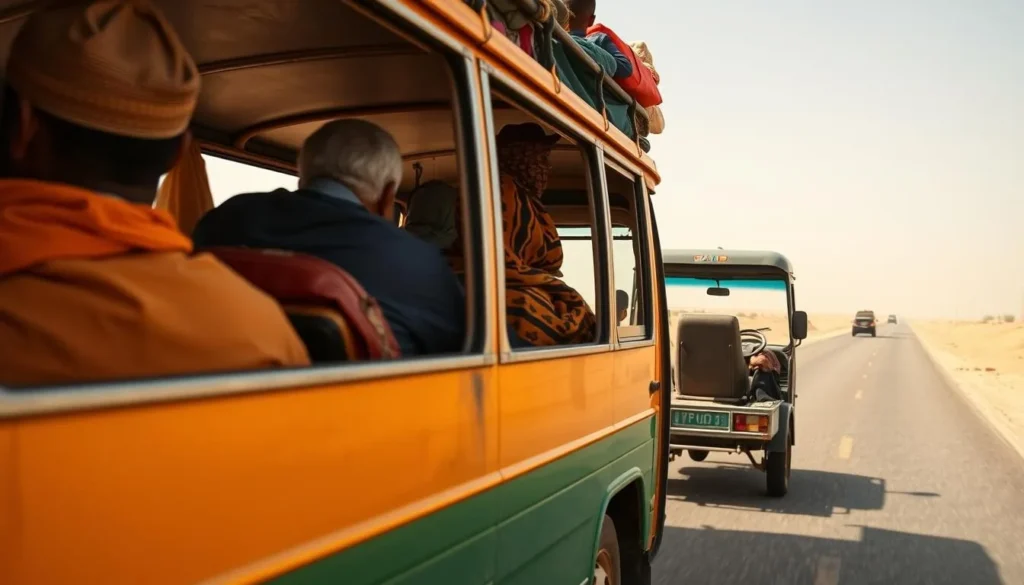
Navigating Mauritania requires patience and flexibility. Public transportation exists but schedules are unpredictable. For independent travelers, these are your main options:
Explore Mauritania Your Way
For the ultimate freedom to discover Mauritania’s remote treasures, consider renting a 4×4 vehicle.
Top Things to Do in Mauritania
1. Ride the Iron Ore Train
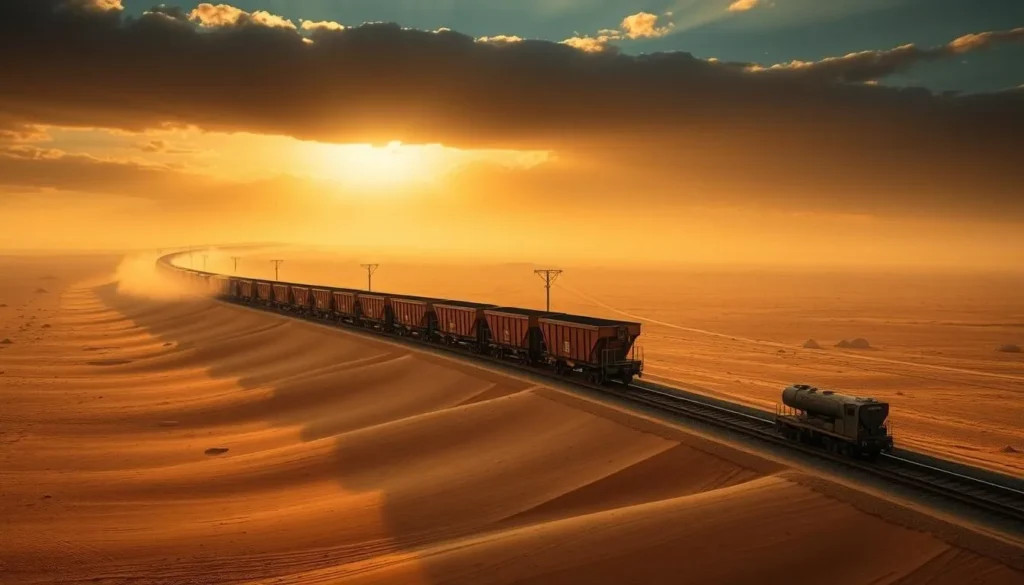
Perhaps the most iconic experience in Mauritania is riding the Iron Ore Train, often called “the longest train in the world.” This 2.5-kilometer-long train transports iron ore from the mines in Zouérat to the port of Nouadhibou. Adventurous travelers can ride atop the open wagons filled with iron ore for an unforgettable 18-hour journey across the Sahara. The experience is challenging (you’ll be covered in black dust) but rewards with incredible desert vistas and stargazing opportunities.
Practical Tips for the Iron Ore Train: Bring goggles, a turban or scarf to protect from dust, plenty of water, food, warm clothing for the cold desert night, and a tarp to sit on. The train departs from Zouérat or the smaller station at Choum at unpredictable times, so be prepared to wait.
2. Explore Ancient Desert Libraries in Chinguetti
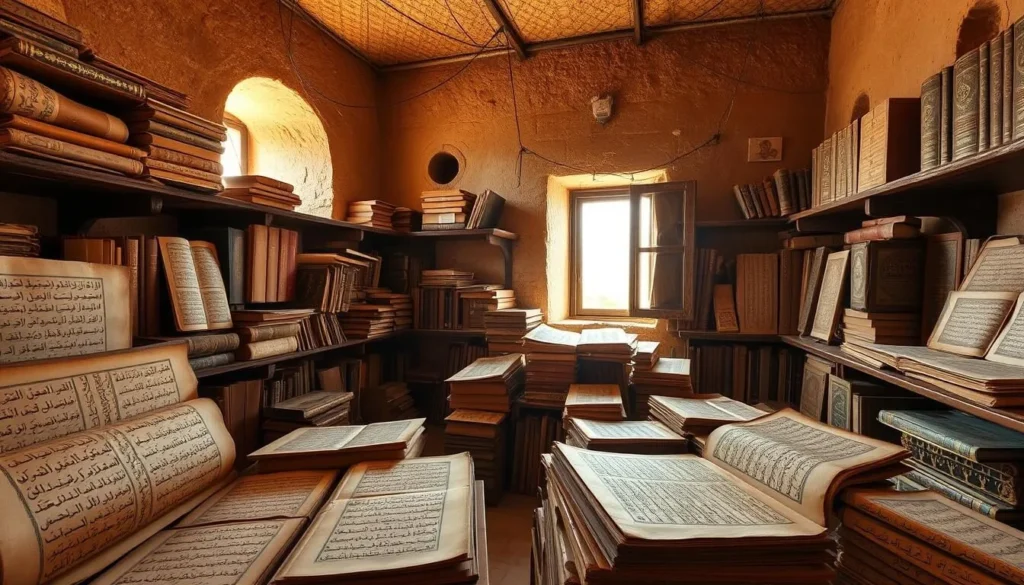
Founded in the 13th century, Chinguetti was once a vital center of Islamic scholarship and a gathering point for pilgrims heading to Mecca. Today, this UNESCO World Heritage site is home to several family-owned libraries containing thousands of ancient manuscripts on subjects ranging from religion and astronomy to mathematics and medicine. Some texts date back 700 years. Wander the sandy streets of the old town, visit the 13th-century Friday Mosque with its distinctive square minaret, and arrange visits to the libraries through your accommodation.
3. Visit the Oasis of Terjit
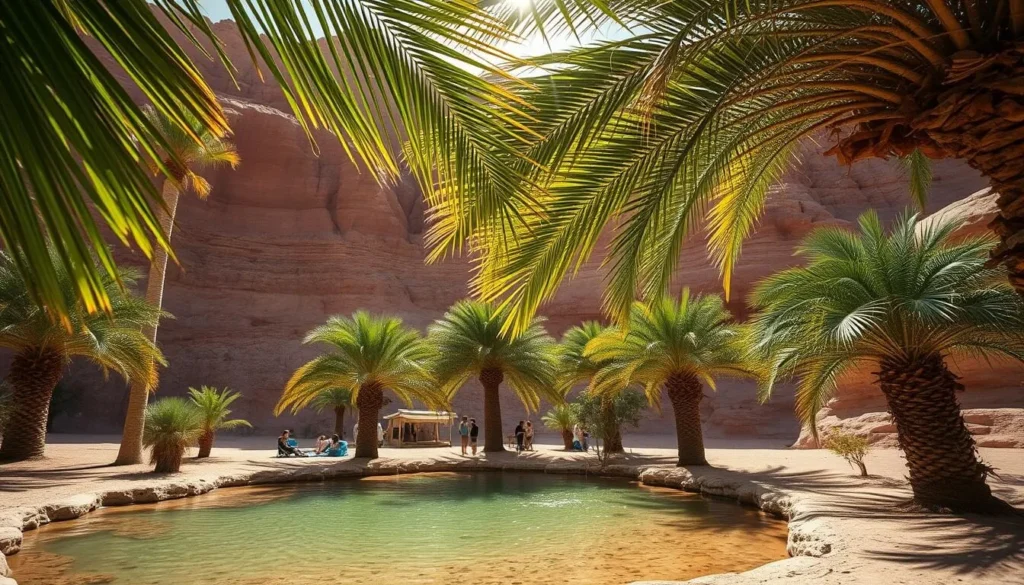
Nestled between dramatic rock formations, Terjit is a picturesque desert spring where cool, fresh water flows year-round, supporting a dense grove of date palms. For centuries, caravans crossing the Sahara stopped here for respite from the harsh desert. Today, it’s a popular spot for both tourists and locals to relax in the shade and even swim in the small pools. Stay overnight in one of the simple tented camps to fully appreciate the tranquility and starry desert skies.
4. Discover the Medieval Town of Ouadane
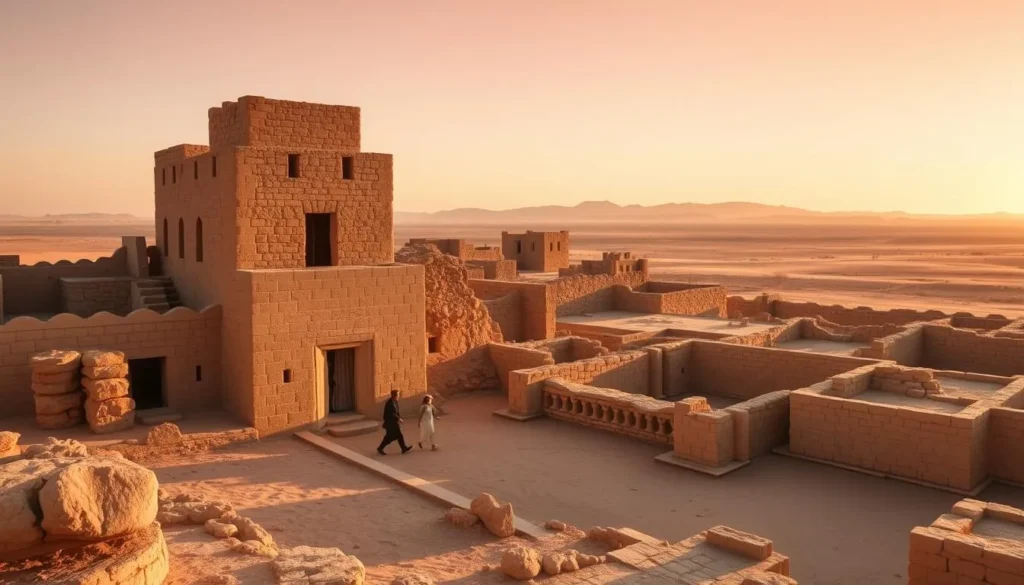
Another UNESCO World Heritage site, Ouadane was founded in 1147 and prospered as a trading post on the trans-Saharan gold route. The partially restored ruins of the old town dramatically overlook the Sahara plains. Explore the narrow alleys, visit the old mosque, and climb to viewpoints offering spectacular desert panoramas. Ouadane is also the base for excursions to the Eye of the Sahara (Richat Structure), a mysterious geological formation visible from space.
5. Experience Nouakchott’s Fish Market
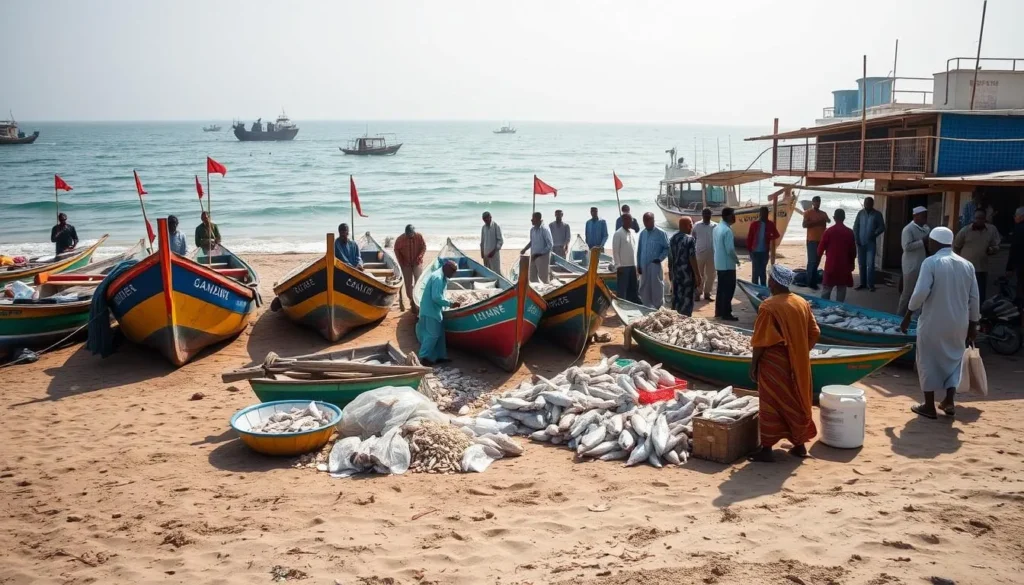
The capital city’s Port de Pêche (fishing harbor) offers one of West Africa’s most vibrant maritime scenes. Every afternoon, hundreds of colorful wooden pirogues return to shore with their catches, creating a spectacular display of activity as fish are sorted, cleaned, and sold. The market is chaotic, aromatic, and utterly authentic. Visit around 4-5 PM to see the boats returning and the market at its busiest. Hire a local guide to navigate the scene and explain the process.
Experience Mauritania’s Highlights
Book guided tours and unique experiences to make the most of your Mauritanian adventure.
Browse Activities & Sightseeing
6. Visit the Banc d’Arguin National Park
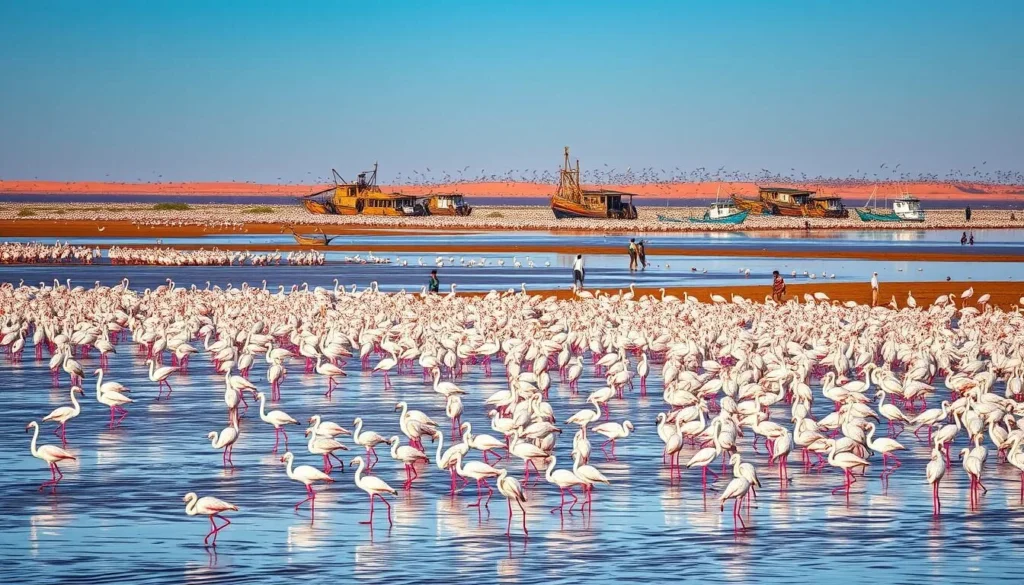
This UNESCO World Heritage site covers over 12,000 square kilometers where the Sahara meets the Atlantic. The park is one of the world’s most important bird sanctuaries, hosting millions of migratory birds each year. The unique ecosystem where desert meets ocean creates diverse habitats including sand dunes, coastal swamps, small islands, and shallow coastal waters. Visit with a guide to spot flamingos, pelicans, and countless wading birds, and meet the Imraguen people who practice traditional fishing methods in cooperation with wild dolphins.
7. Explore the Remote Town of Tidjikja
For travelers seeking authentic Saharan experiences off the typical route, Tidjikja offers a glimpse into traditional desert life. This remote oasis town serves as a trading center for nomadic desert communities. Wander the local market where desert people come to trade goods, explore the old quarter with its traditional mud-brick architecture, and enjoy the hospitality of locals who rarely see foreign visitors. The journey to Tidjikja itself is an adventure, crossing vast stretches of desert landscape.
8. Marvel at the Camel Market in Nouakchott
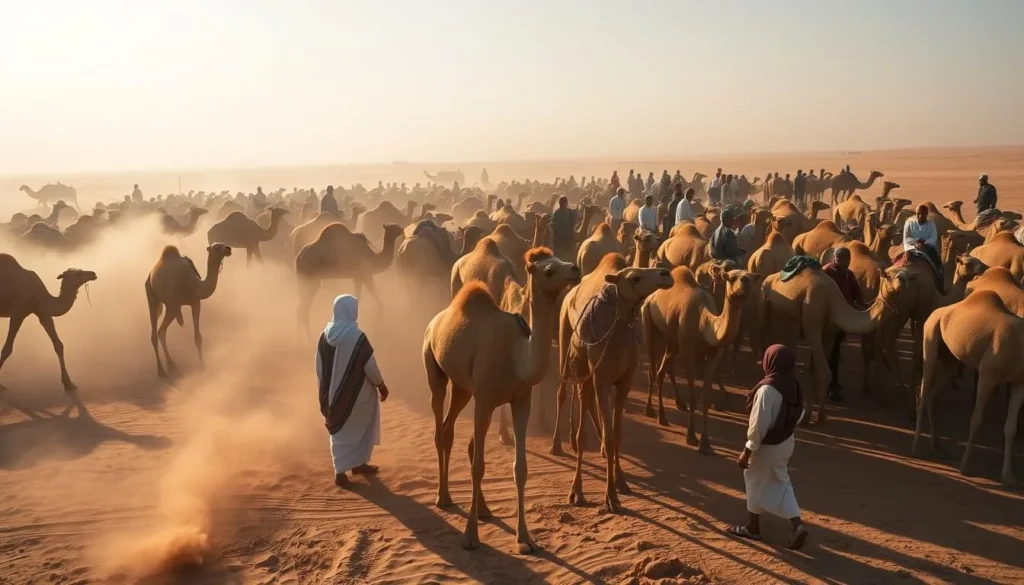
On the outskirts of Nouakchott lies one of Africa’s largest camel markets, where hundreds of camels are bought and sold. The market offers fascinating insights into the continuing importance of these animals in Mauritanian culture and economy. Visit in the early morning to see the market at its most active, as traders negotiate prices and showcase their animals. Photography is generally permitted, but it’s polite to ask first and consider offering a small tip.
Where to Stay in Mauritania
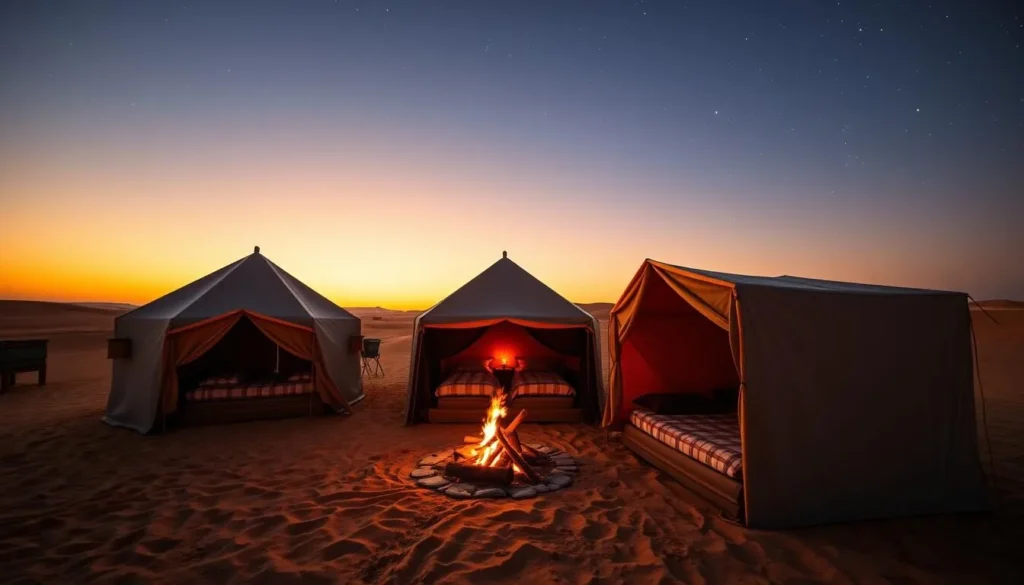
Accommodation in Mauritania ranges from basic to mid-range, with few luxury options outside the capital. In Nouakchott and Nouadhibou, you’ll find modern hotels catering to business travelers and the occasional tourist. In smaller towns and desert areas, expect simple guesthouses (auberges) and tented camps with basic facilities.
Find Your Perfect Stay in Mauritania
From desert camps to city hotels, find accommodations that match your adventure style.
Practical Information for Visiting Mauritania
Visa Requirements
Most visitors require a visa to enter Mauritania. Visas are available on arrival at Nouakchott International Airport for most nationalities and cost approximately €55 for a 30-day single-entry visa. The process includes taking photos and fingerprints. For land borders, it’s advisable to obtain a visa in advance from a Mauritanian embassy.
Currency and Money
The local currency is the Mauritanian Ouguiya (MRU). ATMs are available in Nouakchott and Nouadhibou but can be unreliable, so bring enough cash. Euro and US dollars are widely accepted for exchange. The black market exchange rate is often better than official rates, but exercise caution when changing money informally.
Communication
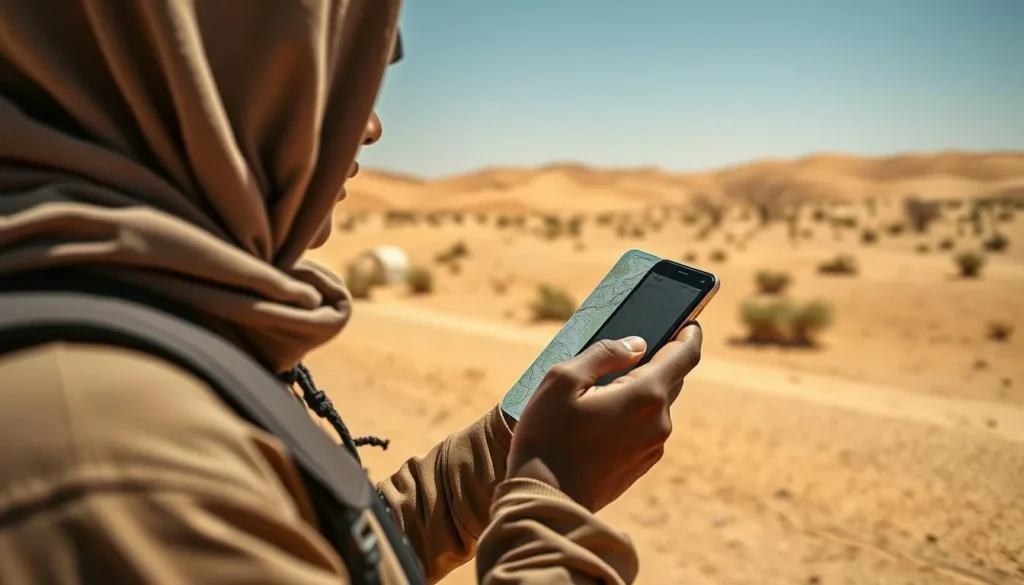
Mobile coverage is good in major towns but nonexistent in remote desert areas. Local SIM cards are affordable and available from providers like Mauritel Moov. A SIM card costs around 150 MRU with data packages starting at 100 MRU for 2.5GB. Internet speeds are generally slow, and connection can be intermittent.
Safety Considerations
Despite travel advisories that mark parts of Mauritania as high-risk, most travelers report feeling safe. The country has significantly improved security in recent years. Military checkpoints are common throughout the country, especially on major roads. Always carry photocopies of your passport and visa, as officials may request them. Avoid the far northern regions and areas along the Mali border, which have higher security concerns.
Health Tips: There are limited medical facilities outside major cities. Bring a comprehensive medical kit, including treatments for stomach issues. Drink only bottled or purified water. Consider antimalarial medication if visiting during the rainy season or coastal areas.
Cultural Etiquette in Mauritania
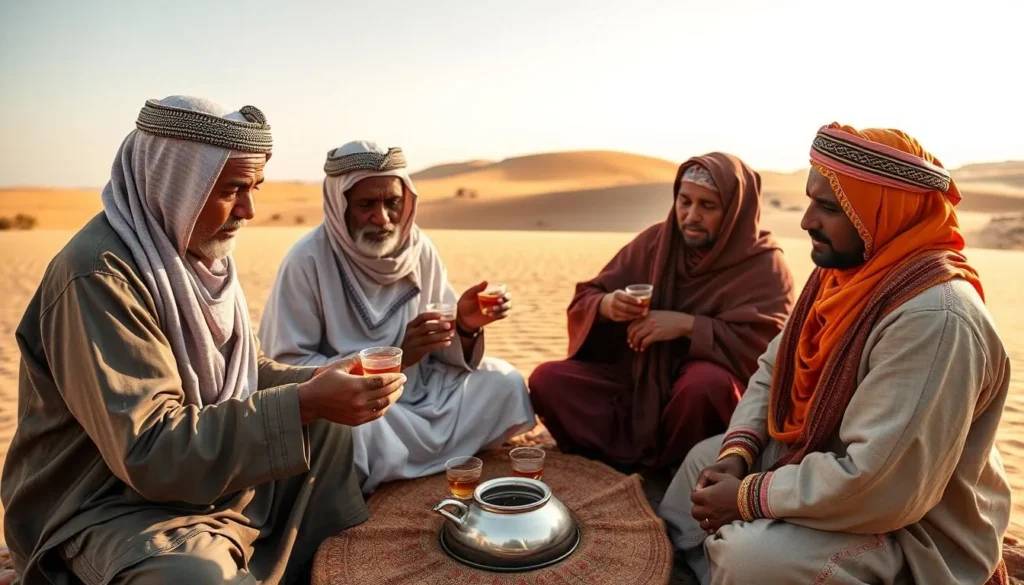
Mauritania is a conservative Islamic country where traditional customs are deeply respected. Understanding and respecting local cultural norms will greatly enhance your experience:
Mauritanian Cuisine
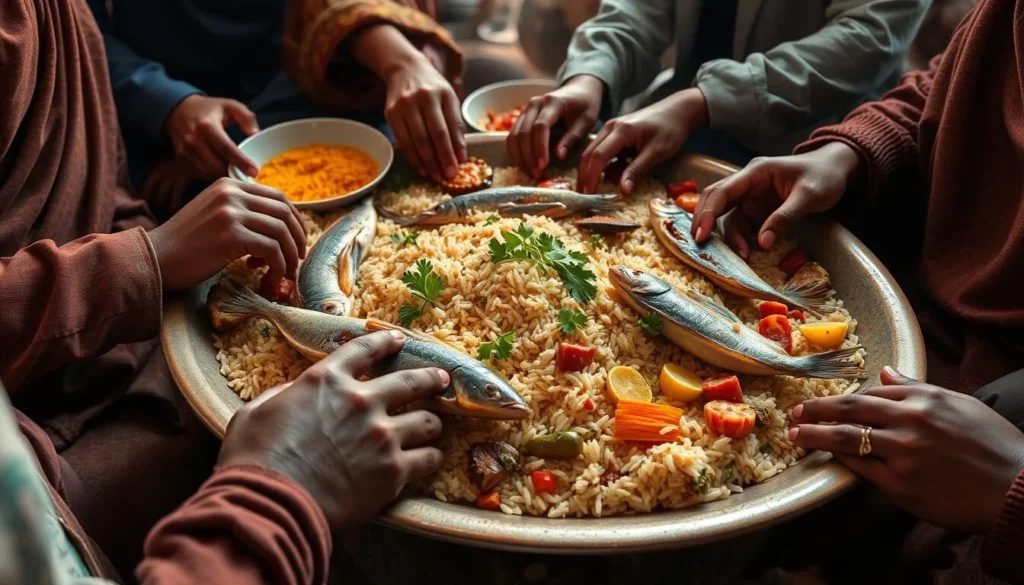
Mauritanian cuisine reflects the country’s position between North and West Africa, with influences from both Arab and sub-Saharan culinary traditions. Meals are typically eaten communally from a large shared plate, using the right hand only.
Restaurants are limited outside major towns. In remote areas, meals are typically available at your accommodation. In Nouakchott, you’ll find a wider range of options, including some international cuisine.
Is Mauritania Worth Visiting?
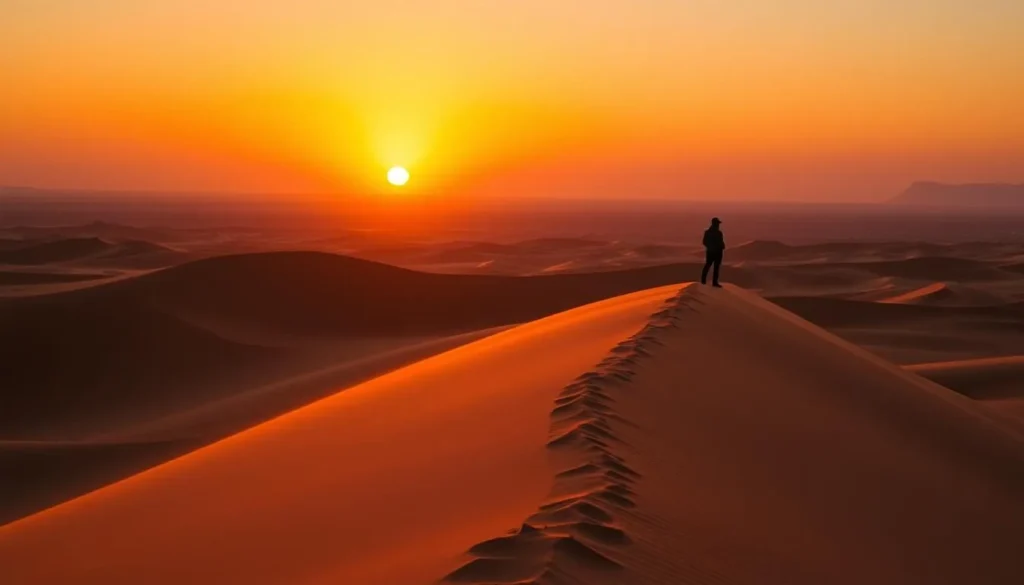
Mauritania remains one of Africa’s least-visited countries, making it perfect for travelers seeking authentic experiences away from tourist crowds. The challenges of travel here – unpredictable transportation, basic facilities, language barriers – are balanced by extraordinary rewards: riding a train across the Sahara under star-filled skies, exploring ancient libraries in sand-swept towns, connecting with nomadic cultures that have thrived in harsh environments for centuries.
This is not a destination for those seeking luxury or convenience, but rather for adventurous spirits willing to embrace the unexpected. For those ready to step off the well-trodden path, Mauritania offers a rare glimpse into a world where ancient traditions meet the modern age against the backdrop of one of Earth’s most dramatic landscapes.
Ready for Your Mauritanian Adventure?
Start planning your journey to this fascinating corner of West Africa.
Discover Activities
The above is subject to change.
Check back often to TRAVEL.COM for the latest travel tips and deals.
